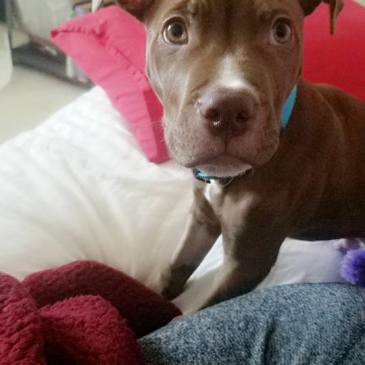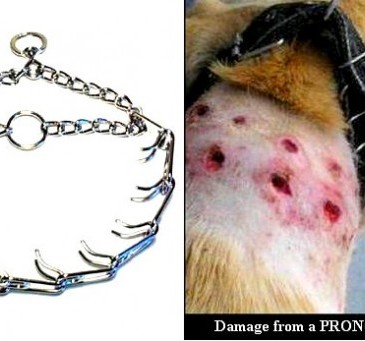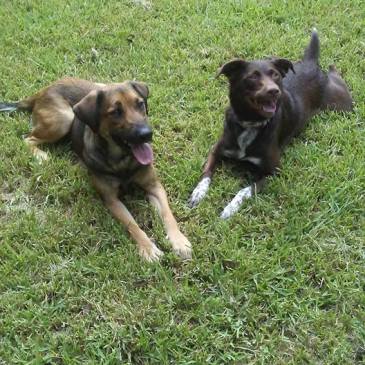Frenetic Random Activity Period (FRAP) In Dogs and Biting
My Puppy Is Racing Around As If He Is Possessed
Many people who have puppies know exactly what this looks like. Suddenly, with no apparent reason, your puppy’s eyes get a wild look. He arches his back into a playful posture and then begins racing wildly. Typically this behavior is accompanied by a tucked tail, racing back and forth, skidding across floors and sometimes also includes nipping behaviors that can become quite troubling. We tend to see a lot of this behavior with puppies being confined to the house during that time when they are waiting for all their shots. Unfortunately, they get a little stir crazy and FRAP becomes common. Usually these outbursts only last a few minutes to ten minutes.
It is believed that this behavior is simply pent up energy that puppies need to be able to release. Their brain literally triggers an immediate release of energy. I explain it to my clients in this way: “Think of your puppy as a bottle of soda. Think of him as the bottle and the liquid inside is the energy. When it becomes too full and it gets shaken up a little, it has to release somehow.” This generally creates a good enough visual that people understand. That said, what do you do about it? Is it negative? Is it normal? Should you be concerned and should you intervene? What do you do about the nipping and biting that can happen during this ‘extreme play’?
Let’s Start With Explaining Bite Inhibition With Puppies
Biting is normal for puppies. It is a very normal part of learning how hard is too hard, and how strong they are. When playing with other puppies, which will most generally initially be its litter mates, a puppy learns that he can bite too hard. This happens when his litter mate squeals loudly in pain. At this point, they learn to stop and there is a pause in play. The wounded puppy, who is generally only wounded in pride, will lick himself (licking his wounds) in a pretend way. Later on in life this becomes a calming behavior that alerts other dogs that he needs a time out. In the future, your puppy will learn that when he needs a time out for reasons of stress or injury, he’ll pause and start grooming himself at what seems to be the strangest of times. This is all part of an intricate dance in communication that dogs use.
While this is happening, the offending puppy will wait during this intermission in play. Eventually, one or the other will initiate play again, usually by offering a play bow. Youve seen this if you’ve ever seen two dogs play. The rear end goes high in the air while the front end drops down on elbows. Sometimes it is accompanied by barking, as my beagle seems to think this is necessary.
These play sessions are extremely important to the early socialization of puppies. They learn manners, how to communicate effectively and most importantly of all, they learn how to control the pressure of their bite. Note that they are never taught by litter mates not to bite, only that they shouldn’t do it hard. Mouthing things is how a puppy explores his environment. To a large extent it is normal to touch things with their mouths. As they get older, they tend to do it less. With consistent and gentle redirection, most all dogs can learn that it is an activity that their human beings don’t especially love.
The Good And The Bad
We don’t really want to discourage puppies from playing and learning with each other for obvious reasons. That said, many puppies are removed from their mother as soon as they are eating solid food and people declare, “they’re eating so they are ready to go to new homes!”
NO! A puppy may be eating solid food but he is not fully developed mentally or socially. These final weeks of socialization with litter mates and mother are crucial to proper development. They become retarded in their ability to communicate with other dogs for the rest of their lives if they are deprived of these early lessons during the time that their brains are actually still growing and developing.
All too often, I work with dogs who were removed from the litter before the age of 7 weeks and they develop severe behavioral issues as they get older. These issues often stem from an inability to properly react to their environment. It could so easily be avoided.
Just as important as it is for that outgoing and rough puppy to learn to inhibit his bite, it is also just as important for that shy little puppy to learn as well. They will be picked on and bullied by siblings into playing along and learning to bite back. This is equally important that they learn to bite! Why? After all it seems like having a dog that really never has an interest in biting is better doesn’t it?
Think of it like this, wouldn’t you rather have that shy dog learn to control his bite by experimenting on his litter mates and learning those lessons at 5-7 weeks of age, than deciding to see how strong his jaws are when your child is playing roughly with him? A dog who is left longer with the litter, will be the dog who gently mouths but doesn’t bite hard. He will learn not to cross lines. The dog who bites down and nips hard all the time is the dog who never learned these lessons early on.
What Does This Have To Do With FRAPing?
Biting and nipping often happen with over stimulation. I have had a puppy that I’ve worked with from age 8 weeks. Klaus (pictured above) is a red nosed pit bull puppy who was very easily over stimulated and fell into bouts of FRAP all too frequently. Picking him up, could cause FRAP and he’d growl, struggle and bite. He drew blood on his owner many times before he was even 12 weeks old. As many of you know, those puppy teeth are like razors. He nipped at noses, faces, hands, feet, pants. He could only be handled with a pair of mechanic’s gloves on, with the rubber for finger protection from those puppy teeth!
One of the hardest things for me to get owners to understand is that you must remove yourself from the situation. You don’t remove the dog, you ignore the dog and walk away from him. Why? Think! Come on, you remember. Think about what I’ve stated above.
You have to create the time out by ‘licking your wounds’ which triggers the pause! So when you yelp in pain or say “Ouch!” because he nipped you, then you must get up and move away from your puppy and ignore him. When a few moments have passed, you can attempt to initiate play or contact again. If the nips happen again, you rinse and repeat. Eventually, he learns that his behavior is causing you to pause play. This is how they learn. If you can bridge the gap by speaking his language, he’ll learn much faster.
During FRAP, it is very important to understand that interacting with pup, placing hands on him, trying to pet him, even speaking to him or laughing and giggling at him, can encourage the behavior and make it last longer.
So What Do I Do?
Get up, walk away and completely ignore the pup. Let him do his racing and let him settle on his own. Don’t interact with him during FRAP. Don’t try to stop FRAP. Don’t yell at him during FRAP. Don’t encourage FRAP either. Just ignore it. It will diminish as he’s able to get outside and get more outside stimulation. He’s getting stir crazy. Just roll with it, ignore it as best you can. If he bites at you, yelp (say OUCH! or shriek in a way that is obvious that it hurt) and then remove yourself from the situation. Removing HIM will NOT fix the behavior. Placing hands on him at this time will be a mistake and laughing will encourage it.
Understand that if this puppy was removed from mom under the age of 7 weeks, it could take much longer for him to learn to stop this behavior. Please, be patient and consistent. Klaus’ mom thought she’d never be able to love on him and snuggle with him for fear of being bitten. He’s now almost 5 months old and is going out for regular trips to run errands with her and get walks. FRAP has all but stopped. Biting and nipping have almost completely stopped. The last time I was there, he laid his face in my lap and invited head scratches and rubs, even kisses on his head. When he was 10 weeks old, I wouldn’t dare get my face that close to his teeth. He’s becoming a different dog.
Never give up. Patience. Persistence. Consistency. Those things will get you everywhere. Good luck!
Dawn
“The Canine Coach”





